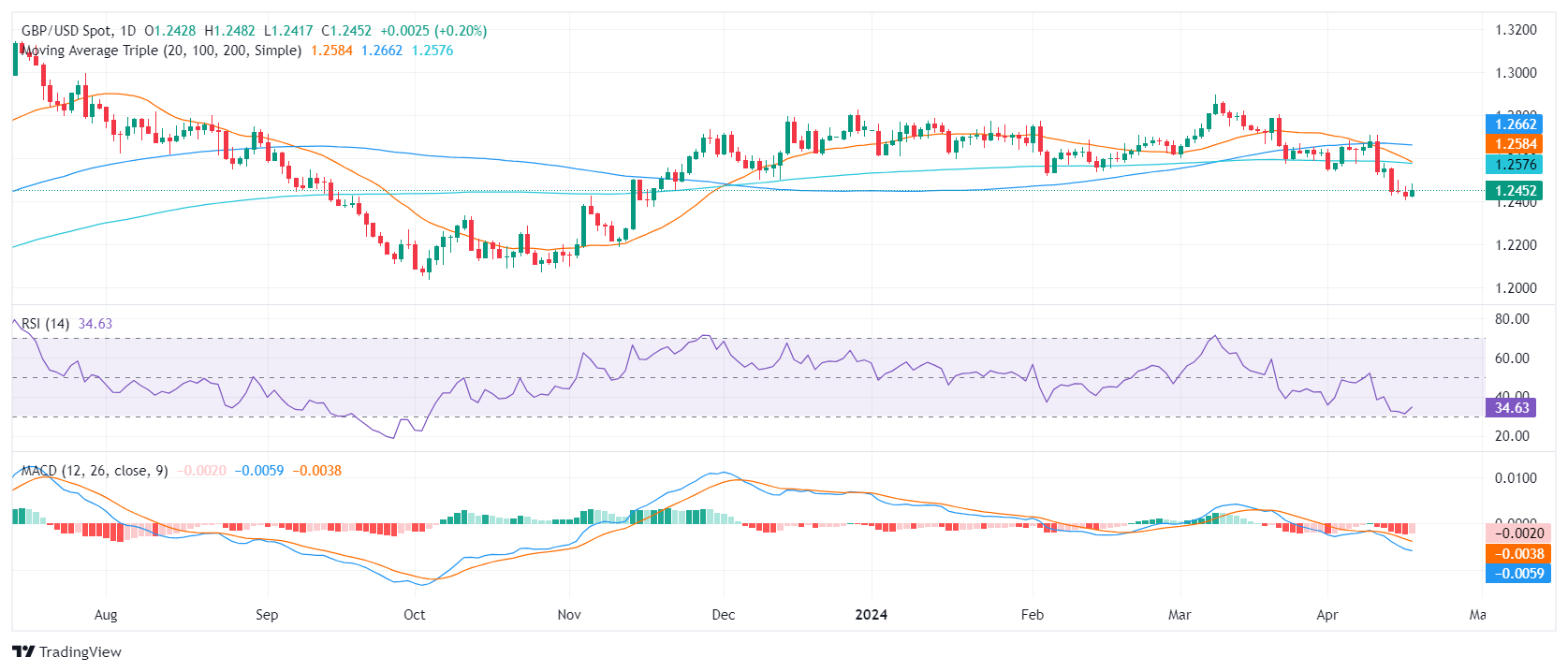GBP/USD gains some ground after British inflation data
- Markets are pushing the start of the easing cycle from the BoE to September.
- Fed Chair Powell's hawkish stance on Tuesday strengthened the US Dollar.
- As the BoE and Fed’s policies align, the Pound may see additional gains.
The GBP/USD pair is currently trading slightly higher at 1.2448, tallying daily gains. Meanwhile, the USD’s rally was halted due to US Treasury yields declining, but the Greenback’s outlook is bright as the US economy remains strong and markets bet on a more aggressive Federal Reserve (Fed).
Earlier in the session, the UK's Consumer Price Index (CPI) for March reported a slight increase, indicating ongoing inflationary pressures. As a reaction, markets readjusted their expectations on the next decisions from the British bank, and the initial cut is now anticipated for September, a delay from previously expected August. Furthermore, the likelihood of a second reduction in December has decreased to 60% from being fully anticipated earlier in the week. This recalibration of expectations has benefited the Pound on Wednesday.
In line with that, the US continues to see robust inflation and economic figures, underpinning the Fed’s decision to maintain a restrictive policy stance longer than initially expected. So as both bank's policies align, the GBP may see further gains or the pace of the pair may be dictated by how wide the US and GBP’s yield spreads get.
GBP/USD technical analysis
On the daily chart, the Relative Strength Index (RSI) is edging towards oversold territory. On Wednesday, there was a positive movement from 31 to 34 which suggests that the market is currently dominated by sellers, and the pair might be due for a price correction or reversal as sellers take a breather.
When assessing the wider scenario, it's noticeable that the GBP/USD has been trading below the Simple Moving Averages (SMAs) for 20-day, 100-day, and 200-day periods which suggests that the overall trend remains bearish. That being said, traders should pay close attention to an impending bearish crossover at 1.2570 between the 20 and 200-day SMA, which could add further downside pressure on the GBP/USD.
